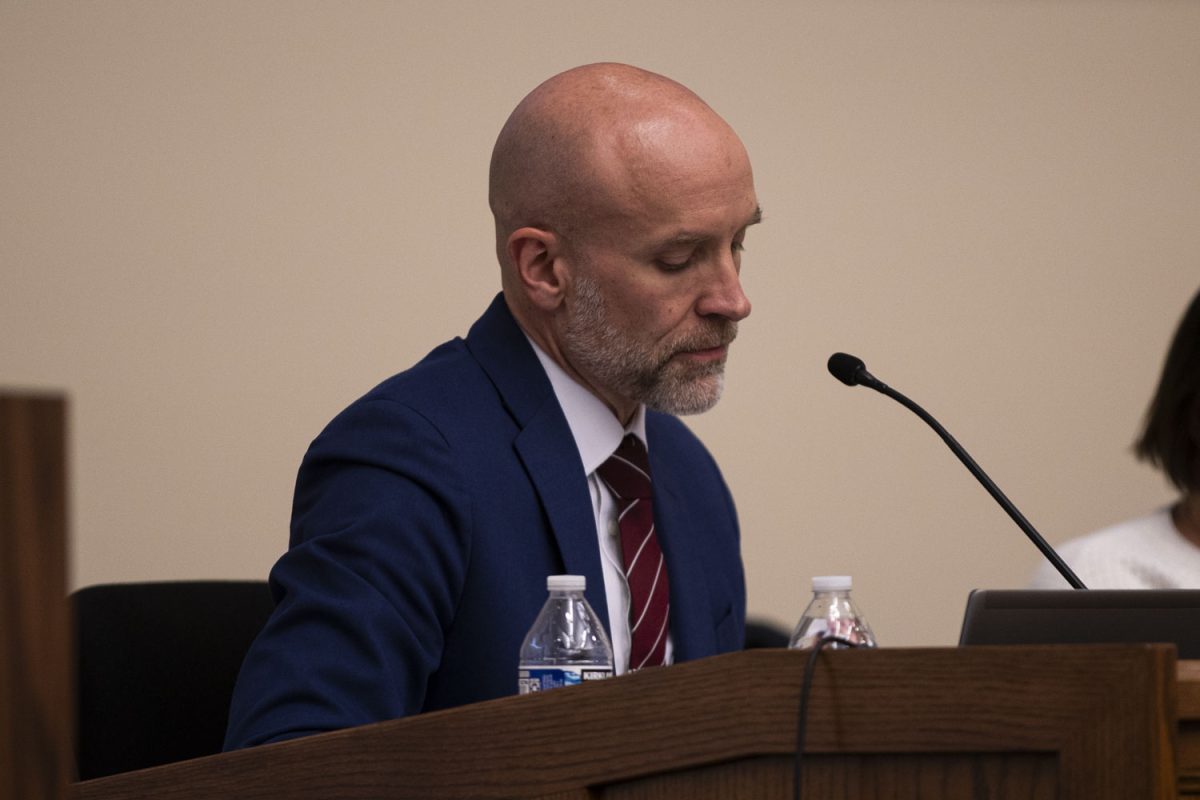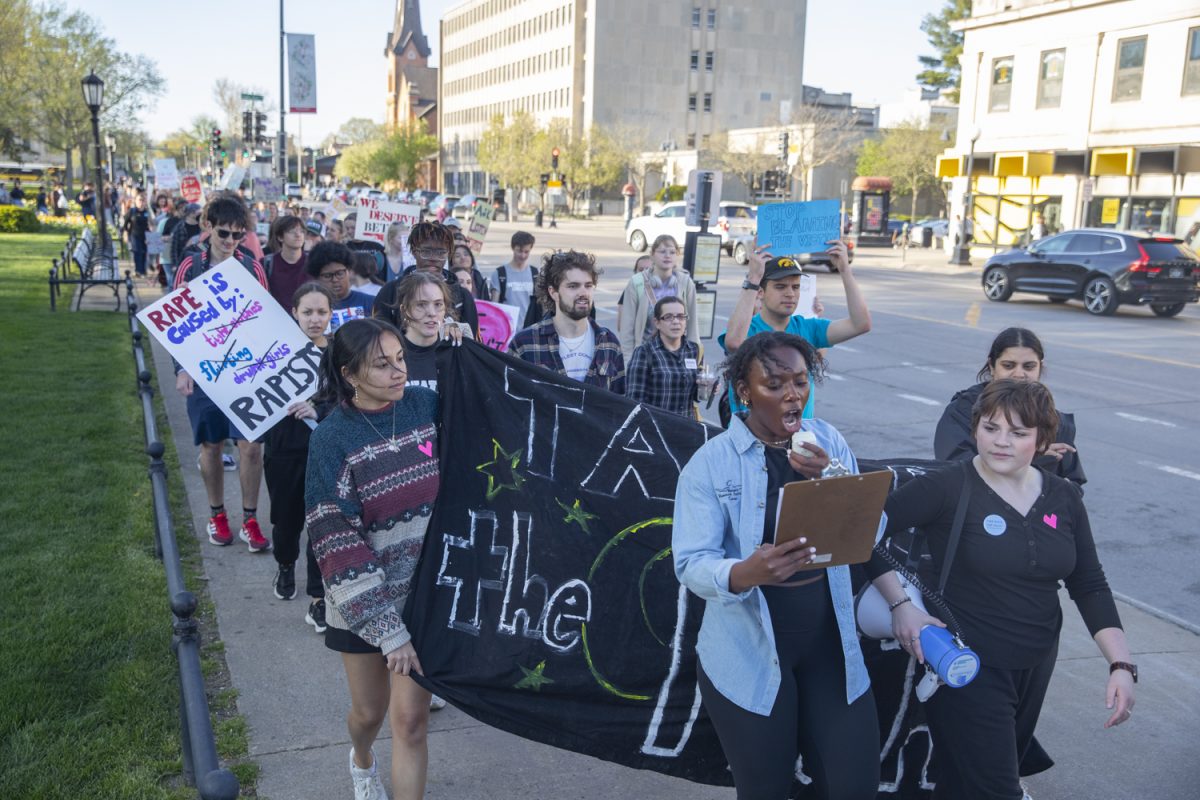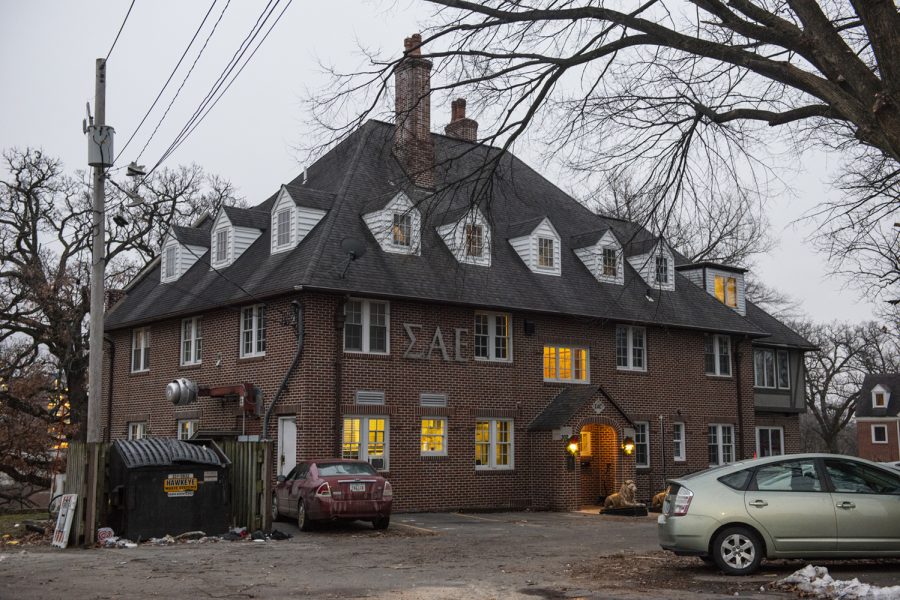George Balluf Saloon, 1899; Hawkeye halfback Nile Kinnick, 1939; Nobel Peace Prize winner Paul Engle in the Iowa Writers’ Workshop, 1950; and The Daily Iowan writing staff, 1919.
Together these moments paint a picture of Iowa City’s rich vibrant history and strong community.
The Wells Fargo mural at 103 E. College St. depicts various scenes of Iowa City throughout its history. The Wells Fargo mural used photos from the UI Libraries, the Associated Press, and John’s Grocery, 401 E. Market St., to emphasize its appreciation for the community.
Angela Kaipust, a Wells Fargo spokeswoman, said the company feels it is important to celebrate the history of the communities in which it operates.
"As a company that is 160 years old, we celebrate our history and the history of the community we serve," she said.
Kaipust said the mural is a common project for Wells Fargo, and the company has been making historical murals since 2002.
Doug Alberhasky, the manager of John’s Grocery store, said he enjoyed taking part in the creation of the mural by giving Wells Fargo a copy of the George Balluf Saloon photo.
Alberhasky said the photo shows John’s Grocery back when it was a bar for the Pabst Blue Ribbon Co. at a time when there were several different bars on the street, each one serving a different type of beer exclusively.
For Alberhasky, the photo reminds him of the history of Iowa City’s local breweries and the competition between local breweries.
"With three breweries right in the block here, the motto for the Erlonger Beer, which was the beer that Dubuque Star made for a number of years, originated because the owner here only served Pabst, and their motto was ‘Erlonger, the beer that made Milwaukee jealous," he said telling a story of the history of bar that once occupied the John’s Grocery building.
Alberhasky said John’s has a significant history in Iowa City, and he was pleased with how the mural turned out. He was surprised with how large the mural ended up being, but felt it was necessary to show the city’s rich history.
"I think they had a big story to tell," he said.
The UI Libraries also gave the use of some of its photos from the Frederick W. Kent Photo Collection.
David McCartney, a university archivist who worked with Wells Fargo, said he was approached April 2011 for photos of Iowa City throughout its history. He quickly directed Wells Fargo toward the university digital library’s Iowa City town and campus scenes collection.
McCartney said most of the images the Wells Fargo bank used were from the university’s official photographer.
"Many of the images were taken by Frederick Kent — he founded the University Photo Service back in the 1920s, and he was the university’s official photographer for over 50 years," he said.
McCartney said that he liked the final product of the mural, but he couldn’t choose his own favorite picture.
"My personal favorites are those that depict so called everyday life," he said. "We really are the product of our own everyday experiences no matter how ordinary they might seem to us they really are significant in the long term."






